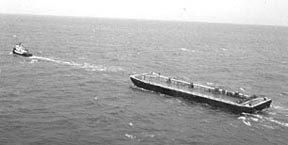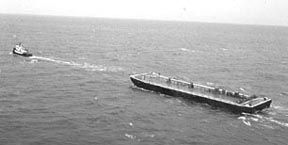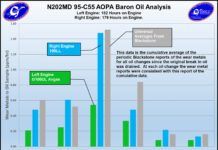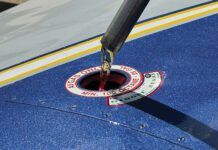
Two decades ago, when the aviation press published the first reports on the imminent demise of 100LL avgas, it was supposed to be gone by the early 1990s. Didnt happen.
Twelve years ago, in the March, 1991 issue of Aviation Consumer, we authoritatively quoted a GAMA expert claiming that because lead was gone from autogas, refiners would no longer find it economically attractive to make leaded avgas and it would vanish. That didnt happen, either.
What the hell is going on here? Cant the aviation press make at least one doomsday prediction and have it come true? (At least we got the Mooney bankruptcy prediction right.)
Since weve been wrong before we’ll hazard another prediction: 10 years from now, you’ll still be able to buy 100LL. Itll cost $3.10 a gallon but you wont mind because you’ll be flying a diesel.
As we report in the companion article, the persistent refusal of 100LL to lay down and die is complicating the emergence of electronic engine controls. The original-and convincing-impetus for this technology was to accommodate the lower octane, lead-free gasolines that would replace avgas. Only a small fraction of aircraft piston engines require the octane boost that only lead can provide but these engines burn the lions share of avgas in the U.S.
Clean Air
The panic over the demise of 100LL dates to the 1970s, when the Environmental Protection Agency began cracking down on lead as a pollutant. By 1979, lead was we’ll on its way out of autogas, if not gone entirely. But 100LL aviation fuel was given a temporary pass at the time because there was no ready replacement, the alphabets convinced EPA that the continued availability of avgas was a safety issue and, really, who cared? At the time, avgas accounted for something like 0.20 percent of all gasoline production in the U.S. (Its even less now.) The EPA certainly had larger fish to fry.
It still does. As the Clean Act has been continually amended over the years, leaded aviation fuel has had its exception-to-the-rules renewed over and over again. A spokesman for the EPA told us the agency currently has no regulatory initiatives aimed at the lead in avgas. In fact, the EPA specialist we spoke to wasnt even aware that avgas had lead in it.
One of the ways the industry has kept the regulators at bay is by agreeing to actively pursue alternative fuels and/or technology to allow piston aircraft engines to burn lower octane unleaded gasolines. The emerging FADECs are one result of that, the other result is several new fuels that may or may not pan out.
The enduring problem with lead is that nothing in the chemical world works quite as we’ll and as cheaply at raising octane and providing detonation margin. Ethyl alcohol has been a contender as an octane booster but its hygroscopic-it absorbs water-which is obviously not a good thing for aviation fuels.
Nonetheless, the industry has pursued alternative fuels and one of them is ethanol based. The so-called AGE85 alternative aviation fuel has been certified by the FAA and could conceivably go into distribution. Its 85 percent bio-originated ethanol with a petroleum additive called tiptate and a bio-diesel additive for lubrication.
A second fuel, 82UL, has also been certified and could be distributed. But neither fuel is a simple replacement. AGE85 has less energy content than 100LL so for the equivalent volume of fuel, the hit against range is significant, up to 20 or 30 percent. The FAA likes 82UL but high-horsepower engines wont run on it because it lacks detonation margin.
Both 82UL and AGE85 will require separate tankage and distribution networks that don’t now exist, plus amended type certificates for aircraft approved for other fuels. Its the classic chicken-and-egg, with FADEC thrown in as bacon. Until the demand is there, the distribution wont be set-up and until the distribution is set-up, the demand wont rise.
Avgas Rules
Hence avgas endures. According to Phillips, the leading refiner of 100LL, 80 percent of all avgas produced is burned by the 20 percent of the fleet whose octane requirements mean they cant burn anything else. FADEC addresses octane shortfalls but as long as 100LL remains available-which Phillips insists it will-the incentive to invest in FADEC remains less urgent.
And what about persistent rumors that only one source for tetra ethyl lead remains in the world and that avgas is such a small line of business that Phillips and others will soon drop it as not worth the bother?
Phillips confirms that it gets lead from only one source: a UK-based company called Octel. But Phillips believes that supply is reliable and not threatened by any overt regulation. As for dropping avgas, Phillips says it has its own transportation network-pipeline, rail and barge-and makes more than enough profit from avgas to remain in the business for the foreseeable future. That doesnt sound like the end of avgas to us. But weve been wrong before.





